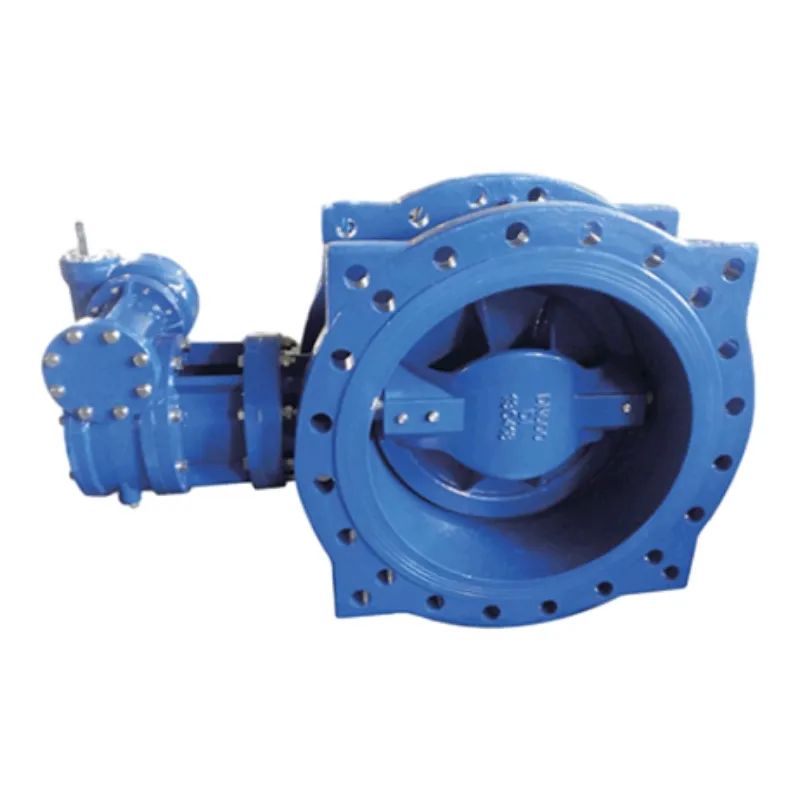Dec . 04, 2024 09:36 Back to list
pneumatic butterfly valve
Understanding Pneumatic Butterfly Valves A Comprehensive Overview
Pneumatic butterfly valves are critical components in various industrial processes, serving as efficient flow control devices in piping systems. Their design and operation make them versatile and suitable for a wide range of applications, including water treatment, chemical processing, and HVAC systems. This article delves into the working principles, advantages, applications, and maintenance of pneumatic butterfly valves.
What is a Pneumatic Butterfly Valve?
A pneumatic butterfly valve consists of a circular disc mounted on a rotating shaft. The disc acts as a barrier to flow, allowing or restricting the passage of fluid through a pipe. When the valve is fully opened, the disc is parallel to the flow, offering minimal resistance. Conversely, when closed, the disc is perpendicular to flow, effectively stopping fluid passage. The term “pneumatic” indicates that the valve is operated using compressed air, which rotates the valve stem and disc to the desired position.
Working Principles
Pneumatic butterfly valves operate based on the principles of rotation and torque. When air pressure is applied, it drives a diaphragm or piston that rotates the valve shaft. This rotation is what opens or closes the disc. The pneumatic actuation is generally preferred for its speed and reliability in operating systems that require rapid response times. Moreover, pneumatic systems can be easily integrated into automated control systems, enhancing the overall efficiency of the process.
The control of the valve can be achieved through different methods, including manual control, remote control, or even automated systems that use electronic signals. This adaptability makes pneumatic butterfly valves popular in managing flow rates and maintaining pressure within pipelines.
Advantages of Pneumatic Butterfly Valves
1. Quick Operation Pneumatic butterfly valves can open or close quickly, which is ideal for processes that require immediate flow control. 2. Space-Efficient Design Compared to other valve types, such as gate or ball valves, butterfly valves are more compact, saving significant installation space.
3. Flow Regulation They provide excellent flow regulation capabilities, making them suitable for throttling applications.
4. Lightweight Their lightweight design simplifies installation and reduces the load on support structures.
5. Cost-Effective Generally, pneumatic butterfly valves are more affordable than other types, both in terms of initial purchase price and maintenance costs.
pneumatic butterfly valve

Applications
Pneumatic butterfly valves are employed in a multitude of industries. Some of the most common applications include
- Water and Wastewater Treatment Regulating flow in treatment plants, ensuring efficiency in purification processes. - Chemical Processes Controlling the flow of corrosive and hazardous materials safely.
- HVAC Systems Managing airflow and pressure in heating, ventilation, and air conditioning applications.
- Power Generation Used in cooling systems and steam generation processes.
- Food and Beverage Industry Ensuring the safe handling of fluids in production lines while maintaining hygiene standards.
Maintenance Considerations
While pneumatic butterfly valves are generally low-maintenance, periodic inspections are essential to ensure optimal performance. Common maintenance tasks include
- Sealing Inspection Regularly check seals and gaskets for signs of wear and tear. - Actuator Check Ensure that the pneumatic actuator is functioning correctly and is properly lubricated.
- System Flush Periodically flush the system to prevent buildup that could hinder valve operation.
- Calibration Ensure that the control signals match the position of the valve for accurate operation.
In conclusion, pneumatic butterfly valves are invaluable in various industrial sectors, offering a blend of efficiency, speed, and cost-effectiveness. Their ability to provide precise flow control makes them indispensable in modern engineering applications. Understanding their operation and maintenance can help ensure longevity and reliability, ultimately contributing to smoother and more efficient industrial processes.
Share